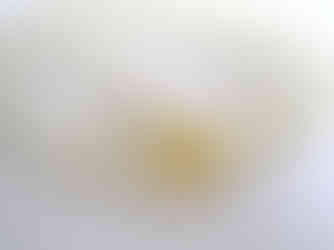10 Anecdotes about Pearls
- Ofri Ben Dov

- Jan 25
- 4 min read
Updated: Apr 16

Pearl is a gemstone formed in mollusks from the class of bivalves and in the shells of snails that inhabit lakes, freshwater, and saltwater. Its origin is biological rather than mineral, unlike other gemstones. Each pearl is unique and has identifying marks based on its origin, defects, and shape. The pearl holding the title of "the largest pearl in the world" since 1934 was found by a fisherman on the island of Palawan, in the Puerto Princesa province of the Philippines. Its size is 67 cm in length and 30 cm in width, weighing about 34 kg. Its estimated value is about one hundred million dollars. The more natural, round, large, smooth, and precise the pearl is, the higher its price. Since pearls are primarily made of calcium carbonate, they dissolve in acid. In the painting "The Feast of Cleopatra" by Gerard Hoet from 1700, the story is depicted in which Cleopatra bets with her beloved Antony and removes the pearl earring from her ear to dissolve it in wine and drink it.

"The Feast of Cleopatra" (Rijksmuseum, Amsterdam, The Netherlands) A pearl is referred to as "mergalit" in Hebrew. The first mention of a pearl in Hebrew is in the Book of Proverbs; Chapter 20, Verse 15: "There is gold, and a multitude of pearls; and precious vessels, the lips of knowledge." Chapter 31, Verse 10: "Who can find a virtuous woman? For her price is far above rubies." The Israelites brought pearls from the Phoenicians, and it appears as one of the stones of the high priest's breastplate. The connotation of the word pearl in Hebrew is something of wisdom.

A pearl diver (EMMA) has been collecting pearl oysters through free diving for 5,000 years. The famous ones are the Japanese who dove naked in freezing waters for their livelihood, without oxygen for long minutes, to collect pearl oysters for trade and delicacies. They were required to harvest a large amount to find a few quality pearls, and many lost their lives. This technique was passed down from mother to daughter until the 1940s when underwater farms for cultivated pearls began. > You are welcome to read more about the pearl divers in the post ‘Emma Pearls - The Japanese Divers.’


The largest pearl in the world since 1934 was found by a fisherman on the island of Palawan, in the Puerto Princesa province of the Philippines. Its size is 67 cm in length and 30 cm in width, weighing about 34 kg. Its estimated value is about one hundred million dollars.

The oldest pearl in the world was discovered on Merowe island in Abu Dhabi. Researchers and archaeologists estimate that it is about 8,000 years old from the Neolithic period when pearls and shells were used. This is the earliest evidence of pearl use ever discovered in the world!
The most famous pearl in the world is the HOPE PEARL, weighing about 90 grams (about 450 carats) and located in the British Museum. Its length is about 5.5 cm and its circumference is about 8 cm. It was named after its buyer, Henry Philip Hope, a gem collector of British-Dutch descent who unveiled it in the early 19th century and it was considered the largest pearl in the world at the time.

Wikipedia The pearl // Photo: Abu Dhabi Archaeological Authority

"Girl with a Pearl Earring" is an oil painting from 1667 by the Dutch painter Johannes Vermeer. This painting is one of the famous works of the artist and is currently displayed in the Royal Gallery in The Hague, Netherlands; some refer to it as the Mona Lisa of Holland.
The famous work "The Birth of Venus" by Botticelli depicts the birth of the goddess of beauty and love in Roman mythology. As the pearl is created from the powers of the sea and the foam of the waves, Venus appears in her full beauty emerging from the shell.

"The Birth of Venus" by Botticelli depicts A famous iconic scene features the fabulous woman in a black dress and a string of large pearls in front of Tiffany's luxury jewelry store. Inspired by the film, I designed a pearl display table for an event in the past. > For more reading about the event, click here.

Audrey Hepburn in a scene from the movie "Breakfast at Tiffany's" (Photo: PR) Cultured pearls - William Saville Kent, Tokichi Nishikawa, and Kokichi Mikimoto are the three key figures in the development of cultured pearls. The first was a British marine biologist who traced the natural process of pearl formation. Introducing a small piece of mantle tissue and a small nucleus from another bivalve into the mantle tissue of a new mollusk leads to the formation of layers that envelop the nucleus creating a pearl. He did not patent the process and sold it to Nishikawa in Japan. Meanwhile, in 1897, Mikimoto discovered how to produce half pearls, and later, after marrying Nishikawa's daughter, they collaborated to cultivate and produce round cultured pearls. Mikimoto became a household name in the industry and incorporated pearls into upscale jewelry. Over the years, Mikimoto expanded the pearl industry into cosmetics, medications, and became a high-end brand.



























Comments